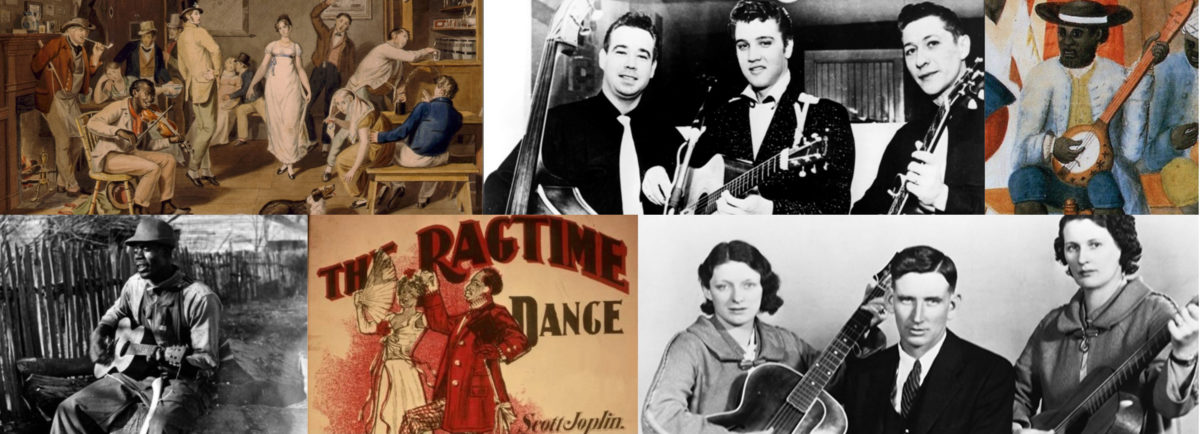Audio Investigation Slide
How Can a Poor Man Stand Such Times and Live?: Audio Investigation Slide
-
- Click the link above to launch the slide.
- Click the media player in the bottom right corner of the slide to begin audio playback of the song.
- Invite students to respond to the following questions shown on the slide:
-
- According to the singer, what has happened to the price of food and other goods?
- What are other sources of economic hardship mentioned in the lyrics?
- What do the lyrics imply about the singer’s earnings in relation to prices and other expenses?
-
- Students should be able to answer all three questions easily. Their responses to the first and second questions will likely include accurate descriptions of rising prices and of the additional economic hardships, but they may not use the specific, applicable terms associated with each, so you can introduce the following: inflation, compulsory public education laws, tithing, and quackery.
Recommendations
This song is useful to introduce a lesson about economic conditions in the United States during and after the First World War, and the causes of the Great Depression.
Although this song was recorded a few months after the stock market crashed in 1929 and is considered a protest song of the Great Depression era, the conditions it describes actually reflect the American economy during and immediately after the First World War. Between 1916 and 1920, inflation rose rapidly, reaching double-digit levels in October, 1916, and peaking at 23.67% in July, 1920. You might provide some simple examples to illustrate what such high levels of inflation mean in terms of the cost of individual goods and the value of one’s earnings, as well as clarifying that inflation refers to an overall increase in price level, as opposed to the prices of a few individual goods. You can then ask students to speculate on the causes of inflation in this period. Among the most significant causes to address are the shift in production from consumer goods to war materiel, and wage and price controls implemented by the government. Students will probably recognize that the decision to supply the Allied Powers prior to U.S. entry would mean that factories produced fewer consumer goods and more military goods, and thus consumer goods would be more scarce because fewer resources would be dedicated to such production. They might not immediately understand the role of wage and price controls, however, so you may need to explain the concept, both in general terms and in terms of the specific controls that existed during the war. You can point out that non-union laborers, who were typically unskilled and earned lower wages to begin with, did not benefit as much as union (skilled) laborers did from the wage controls, or as much as the farmers did from the price controls, and that when both were lifted at the end of the war, inflation rose further and faster.
You can then continue to trace the changes in economic conditions into the 1920s, leading up to the Great Depression, which provides an opportunity to return to the topic of government involvement in the economy. Explain that in the second half of 1920, actions taken by the Federal Reserve to contract the money supply led to a recession from mid-1920 until 1921 and caused rapid, significant deflation, before the price level returned to pre-war rates by April, 1923. While two additional mild recessions occurred during the decade, the American economy expanded as the Federal Reserve lowered interest rates, encouraging borrowing and investment, and productivity rose substantially. This expansion, in turn, fueled considerable stock speculation, and in the absence of proactive, meaningful federal regulation of either the stock market or the financial sector as a whole, the price of stocks soared until the market crashed in October, 1929.
Vocabulary
dope – during the late 19th & early 20th centuries, doctors prescribed opiates and cocaine for a wide range of conditions and symptoms, and these narcotics were also readily available as over-the-counter medications prepared by pharmacists; by the 1910s-20s, the problem of addiction attributable to these practices was readily apparent
dry goods – textiles, ready-to-wear clothes, personal care products, household items; alternately, grocery items (such as tobacco, sugar, flour, and coffee) that do not contain liquid
gristle – cartilage, especially when found as tough inedible tissue in meat
humbug – something that is deceptive or fake, so a humbug pill is a pill presented as medicine that is actually a placebo or something other than medicine
skinning a flea for the hide – to be excessively mean and avaricious; similar to calling someone a skinflint (a person who would save, gain, or extort money by any means)
two bits – 25 cents
Additional Resources
Primary Source Strategies
Printable worksheets with response prompts that guide students in analyzing songs as primary sources.

